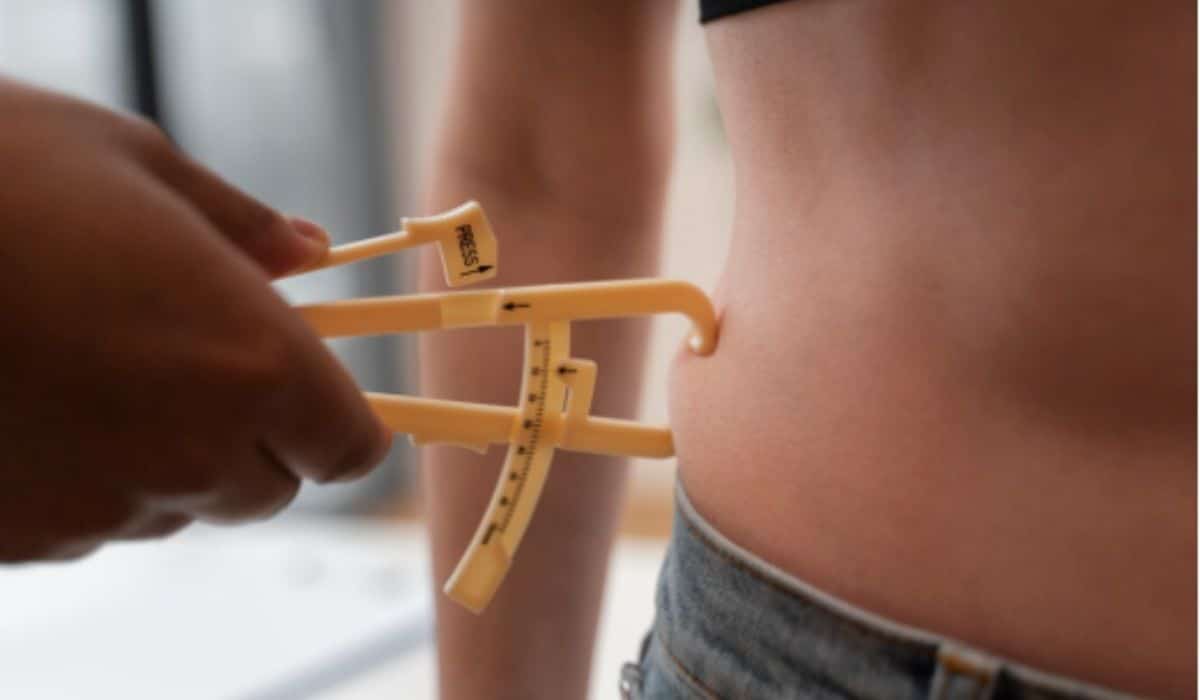Mobile Location: 251.341.0927 | Daphne Location: 251.651.0927
Mobile Location: 251.341.0927 | Daphne Location: 251.651.0927
InBody vs Calipers: Comparing Body Composition Accuracy and Reliability

The InBody vs. calipers comparison highlights key differences in measurement accuracy and reliability for body composition, with InBody using bioelectrical impedance and calipers measuring subcutaneous fat tissue through skinfold thickness. Personal Edge Fitness covers how these methods stack up against alternatives like DEXA scans and ultrasounds for precise body analysis.
Understanding Body Composition: Why It Matters
Body composition means how much fat and non-fat stuff you have in your body. Knowing this helps you see your health and fitness better. There are many ways to check it, like using InBody machines or skinfold calipers. Each method has its own accuracy, cost, and ease of use.
- InBody devices give detailed info about fat distribution.
- Calipers measure subcutaneous fat tissue by pinching the skin.
- Some methods can tell you about visceral fat measurement, which surrounds your organs.
- Good body composition accuracy helps track metabolic health indicators.
- These measurements also point out obesity indicators.
- Fitness assessment tools vary in price and detail.
Defining Body Composition: Lean Mass vs. Fat Mass
- Lean Body Mass includes muscles, bones, organs, and water—basically everything but fat.
- Fat-free mass means all parts of the body with no fat at all.
- Total Body Fat is all the fat you carry. It breaks down into:
- Subcutaneous fat (under the skin)
- Visceral fat (around internal organs)
Knowing these terms helps you check muscle mass and follow changes over time. It’s useful when you want to strengthen your muscle or reduce body fat.
The importance of accurate assessments for health and fitness goals
Getting the right numbers matters for hitting your health goals.
Cost Differences: Tests range from cheap caliper checks to pricier DEXA scans or InBody tests.
Choosing Methods Based on Goals: Athletes need precise lean muscle vs. fat distribution data.
Tracking Fitness Progress: Doing tests regularly shows whether you’re improving or not.
Monitoring Recovery: After injury or illness, watching lean mass changes helps track healing.
InBody Advantages and Limitations
Advantages
InBody scores high in body composition accuracy compared to other BIA tools. It uses advanced tech and checks each body part separately. Here’s what makes it stand out:
- Detailed Segmental Body Analysis: Shows muscle and fat in specific areas for better insights.
- Ease of Use: Quick tests that take about a minute; no needles or fuss needed.
- Portable Measurement Device: Small enough to carry to gyms or clinics without big gear.
- Delivers reliable results that stay consistent over time.
These features help athletes track progress and, with guidance from our experienced trainers, deliver the exact health insights you need.
Limitations
Still, some things can mess with accuracy:
- Hydration Status: Changes in water levels shift readings; being dehydrated usually shows more fat.
- Recent Food Intake: Eating or drinking just before can change water balance temporarily.
- Technician Skill Importance: Properly placing electrodes and following test rules matter a lot.
The usual error in body fat percentage is about 2–3% compared to top methods like DEXA (Nana et al., 2015). Following pre-test rules on fasting and hydration helps get closer to the truth.
InBody at Personal Edge Fitness: Accuracy and Reliability
At Personal Edge Fitness, where you can also learn more about our expert team, we focus on getting accurate measurements with our InBody machines. We keep them calibrated as per manufacturer instructions. Our staff knows how to run tests right by:
- Checking hydration before tests
- Making sure clients stand the same way every time
- Reviewing scan data instantly for quality
How Skinfold Calipers Work: Measuring Subcutaneous Fat
Skinfold calipers measure the thickness of subcutaneous fat—the fat layer right under your skin. A technician pinches the skin at certain places called skinfold measurement landmarks, like the triceps, abdomen, and thigh. These pinches show how thick your total subcutaneous fat is.
By checking several spots, they estimate body fat percentage based on subcutaneous adipose tissue thickness. Ultrasound can also measure this fat and sometimes provides more precise results, but skinfold calipers stay popular because they are simple and cheaper.
Still, accuracy depends a lot on doing it right and picking the same spots each time. Studies say skinfold test accuracy varies but usually has an error of about 3-5% compared to methods like DEXA (Norton & Olds, 1996). Thus, it’s satisfactory but not perfect.
Proper techniques and Protocols

Getting accurate readings with skinfold calipers requires following some rules before and during testing:
- Pre-test hydration guidelines: Drink enough water, but don’t chug right before the test.
- Testing protocols: Take measurements at exact anatomical landmarks with steady pressure.
- Intrarater reliability: The same person should do repeated tests to keep results consistent.
- Interrater reliability: Different testers might get different results; skill matters a lot.
Different Caliper Types and Their Accuracy
There are many kinds of skinfold calipers—from simple mechanical ones to digital devices that have better calibration tools.
- Mechanical calipers cost less but can lose accuracy if not calibrated regularly.
- Digital calipers keep pressure steady and make data easier to record but cost more.
Good calibration means the spring tension stays correct for precise readings. Even fancy calipers give wrong numbers if they’re not checked often. Skilled technicians plus well-calibrated devices lead to better accuracy.
Advantages and Disadvantages of Caliper Measurements
Advantages:
- Low cost makes these devices easy to get for gyms or clinics with tight budgets.
- Portability means you can carry them around easily; no heavy machines are needed.
Disadvantages:
- Results depend heavily on who does the test. Untrained people risk big errors.
- Skinfold calipers only measure subcutaneous fat, not deeper or visceral fat.
Because it only looks at surface fat layers, this method misses changes in deeper fat important for health checks.
Understanding these aspects of skinfold caliper testing—such as its reliance on technique and the quality of the device—allows for a more effective comparison with other methods, like InBody’s BIA, when selecting a way to assess your body composition.
Body Mass Index (BMI) and Its Limitations
Body Mass Index, or BMI, is a quick way to check weight status using just your height and weight. It puts people in groups like underweight, normal, overweight, or obese. But BMI doesn’t actually measure body fat. That means it can be wrong for some folks.
Here are the main limitations of BMI:
- It mixes up fat and muscle since it only looks at total weight.
- It doesn’t tell where fat sits on your body, which is relevant for health.
- It may produce inaccurate results for athletes, older adults, or certain ethnic groups.
Because of these issues, BMI alone might give you the wrong idea about your health. If you want real info on your body fat or muscle, try other methods that dig deeper.
Summary of Body Composition Measurement Methods
Body composition testing tells you about your fat, muscle, and bone mass. It helps track your health and fitness. There are several ways to do this:
- InBody (BIA) uses tiny electrical signals sent through your body to estimate water and lean mass. It’s quick and painless. Results depend on how hydrated you are but usually track changes well.
- Skinfold Calipers: Pinch skin at certain spots to check fat thickness. They cost less and are easy to find, but you need skill to get steady results. If the user is sloppy, accuracy drops.
- DEXA Scan: A top choice for checking bones and soft tissue. Very precise but pricey and often only in clinics.
- Bod Pod Analysis: Uses air displacement to find body volume and fat percentage. It’s accurate but needs special machines.
- Hydrostatic Weighing: Weighs you underwater to estimate body makeup. It’s very accurate but difficult to do because of the setup.
Contact Personal Edge Fitness for Body Composition Analysis
Want to know more about your body? Schedule a consultation with Personal Edge Fitness now.
We use advanced fitness assessment tools made for athlete body monitoring.
Our clinical body composition analysis keeps measurements consistent so you can trust the progress you see.
We give custom tracking reports that explain changes beyond just weight numbers.
Whether you’re training hard or aiming to get healthier over time, our team helps with clear info using tech like InBody scans paired with expert advice.
Book a session today and schedule a consultation for detailed insights that help you make smarter choices about your training and health. Knowing your real body makeup matters if you want lasting results.
| Population (approx.): 23,859 | Geo coordinates:30°31’22″N, 87°54’10″W | Postcodes:36532, 36533, 36559 |
|---|
Directions:
- Start: Fairhope, Alabama 36532
- Head southeast on Scenic Hwy 98 toward Old Marlow Rd
- Turn left onto Co Rd 32
- Turn left onto AL-181 N
- Continue onto AL-181 N
- Turn left
- Turn left toward Consolidated Pk Dr
- Turn left onto Consolidated Pk Dr
- Finish: Personal Edge Fitness 25341 AL-181 Suite 101, Daphne, AL 36526
